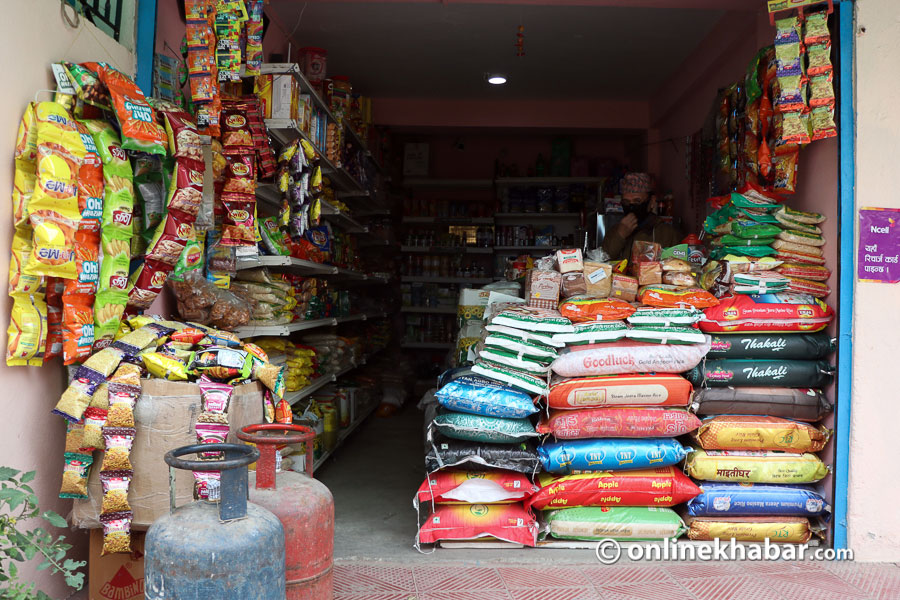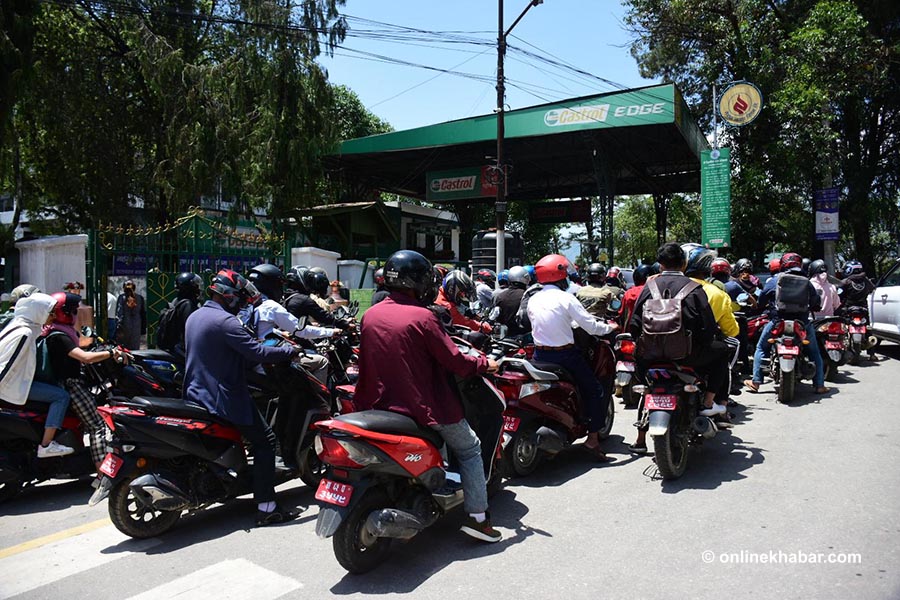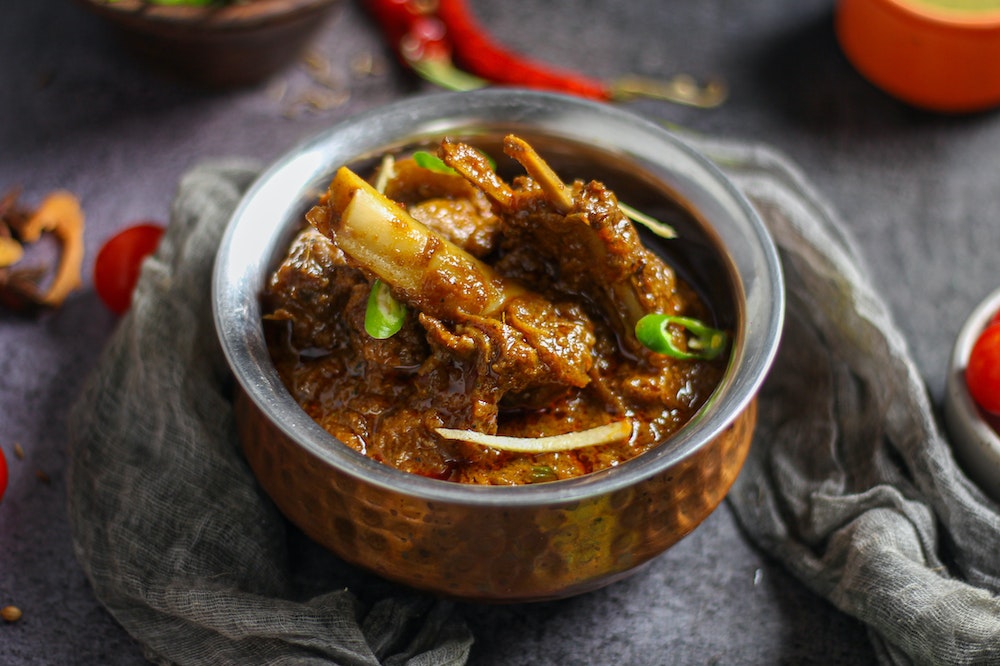“Some time ago, the price of an egg increased from Rs 15 to Rs 17 and now the eggs per crate costs around Rs 500. A few days ago, jar water became more expensive. Recently, noodles price too went up,” Renuka Devkota, who owns a small snack shop near the Shobha Bhagawati temple in Kathmandu, says, “The prices of vegetables are in fluctuation. I used to sell a packet of Wai Wai noodles at Rs 20 and buy it for Rs 18. But, now I have to purchase it at Rs 20 and have to sell it for Rs 22.”
Devkota is suffering from a price hike. She says that the market price got high little by little. “Looking at my small teashop and home kitchen, there is nothing that hasn’t gone up in a year,” says Devkota.
“Everything is expensive except for human labour,” she says. “It seems we are living in a country without any government.”
Likewise, Ekraj Adhikari, a restaurateur in Thamel, feels that the pain Devkota is facing is his own. He claims the prices have never risen like this year, compared to the inflation he faced in 20 years of his career.
“Within a span of a year, restaurant kitchens have become 25 to 35 per cent more expensive,” he says. He claims there used to be a trend of rising and falling prices in the past, but it has not occurred this year. Moreover, once the prices of goods are increased, they have never decreased even if the prices of petroleum products decrease.

He claims that when meat, oil, gas, flour and sugar are all expensive, operating expenses eventually increase. Adhikari, also the general secretary of the Restaurant and Bar Association Nepal (REBAN), adds, “If the prices on the menu are not increased, it will be difficult for the business owners to survive in this inflation.”
These people are just two examples to confirm the inflation in the market at the level where the businesses are on the verge to closing down. Inflation has not only affected their business but everywhere in the country.
The record inflation

Nepal Oil Corporation has increased the price of diesel and kerosene by Rs 27 per litre and petrol by Rs 21 per litre with effect from midnight on Sunday (June 19). The decision, however, took a reverse turn Saturday. But, before that, when the price of diesel increases by 27 per cent, the overall price increase will increase by four per cent, experts say.
Inflation data from the Nepal Retail Trade Association and the Nepal Rastra Bank also indicate towards alarming inflation. Looking only at the first 10 months of the current fiscal year, it can be seen that overall inflation in the country has reached a six-year high. Consumers who have lost purchasing power due to the two-year-long Covid pandemic are facing difficulties due to high prices, but the government sees this as a result of international events. As a result, nothing is being done to make the general public’s lives easier.
According to the Nepal Retailers Association, the prices of daily necessities have gone up sharply in the last year. According to the association’s Statistics Officer Jyoti Thapa, prices of rice, pulses, oil, nuts, flour and spices have also gone up. The highest inflation is in oil and ghee.
Kabindra Shrestha, a retail store owner at Kamalakshi in Kathmandu, says he could earn 10 per cent profit by just investing Rs 1,800 in the previous years, but now, he has to invest Rs 4,000 for the same rate of profit. “Soya bean oil, which sells for Rs 110, used to make 10 per cent profit. Now, when it sells for Rs 304, the profit is still 10 per cent,” says Shrestha.
“Investments have increased due to high prices, but profits have not increased. In the meantime, many small traders have been displaced due to this trend,” says Tuladhar.
According to the Nepal Rastra Bank‘s statement for the first 10 months of the current fiscal year, the overall inflation has come close to 8 per cent. According to the financial status report released by Nepal Rastra Bank, overall consumer price inflation increased by 4.22 per cent during the review period compared to the same period last year. Such inflation was only 3.65 per cent in the last 10 months.
In 2016, Nepal’s inflation was 9.9 per cent. The rate, which was less than 6 per cent since then, is now close to 8 per cent. This year’s inflation has also surpassed the International Monetary Fund‘s projection. The fund had projected inflation at 5.8 per cent in 2022.
What next?

The Supply Policy, 2012, has spoken about ending the price disorder in the market. The need for the policy is clearly stated: Prohibition of artificial shortage in the market, black market cycle and monopoly system (syndicate), collateral pricing (carteling) and obstruction of market entry by non-competitive activities and easy supply of goods and services.
Similarly, by limiting the tendency of adulteration of food and beverages, the sale and distribution of substandard goods, and the disruption of easy and continuous supply of essential commodities such as medicines and food, consumers can consume essential goods and services at a fairly competitive and reasonable price. It has been established that the primary responsibility of the state is to foster a favourable environment.
However, the Ministry of Industry, Commerce and Supplies can neither give reasons for market disorder nor intervene in the market. When asked why the ministry does not intervene in the rising prices in the market, an official of the Food Management and Trading Company under the ministry says it does not get any support from the ministry.
Commerce and market price expert Yogendra Gauchan points out that the government has been slow to do two things immediately due to the problem of inflation caused by the import-based economy. Gauchan says in order to improve the environment of price deterioration caused by the Russia-Ukraine war and Covid, the customs duty on imports of essential commodities should be reduced first. Then, the Nepali products should be stopped from being exported. As a result, imported goods will be cheaper and the supply system of the country will be easier when Nepali goods are stopped from being exported, he says.
“We must determine inflation based on a variety of internal and external market factors. Countries such as India have stopped exporting sugar and wheat after identifying their inflation problem,” Gauchan says.
“If there is an international reason for the market’s deterioration, the prices should be intervened by monitoring and immediately finding the stock of essential commodities,” he continues.
Gauchan emphasises the importance of the government increasing the country’s food storage capacity by enacting laws.
—
This story was translated from the original Nepali version and edited for clarity and length.


























